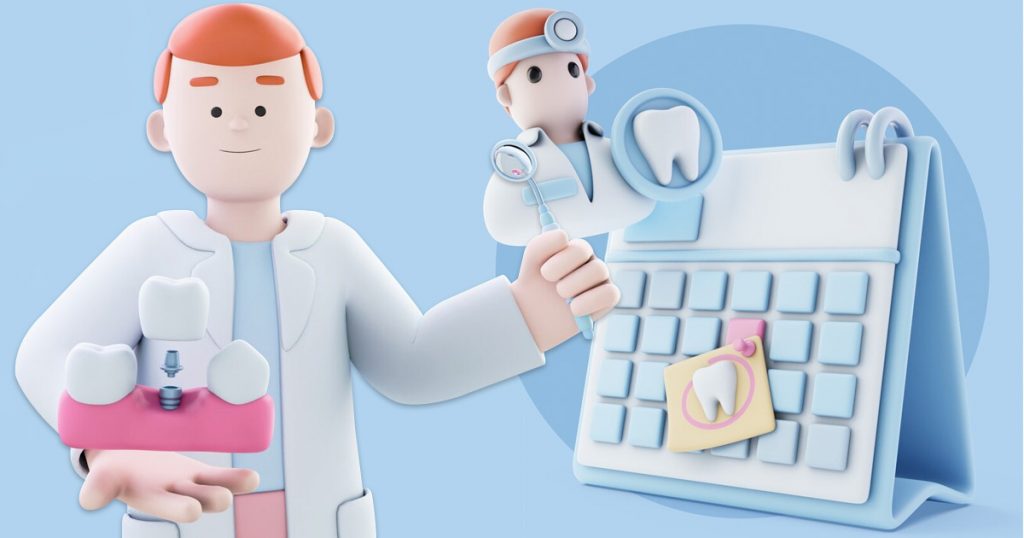Booking dental appointments is key to keeping a dental practice running smoothly. Good scheduling makes sure patients get seen on time, avoids empty slots, and keeps everything on track. It’s all about creating a steady flow that works well for both patients and the dental team.
The Purpose of Dental Appointment Scheduling
A well-organized system for dental scheduling benefits both patients and the dental team. Here are the key objectives:
- Keep the office running smoothly by cutting down on idle time.
- Make sure patients get treated on time, lowering health risks.
- Boost communication between staff and patients.
- Offer flexible appointment options to suit patients’ needs.
- Cut down on no-shows with automated reminders.
- Strengthen patient relationships by offering a hassle-free experience..
These goals lay the groundwork for a successful dental practice. Good scheduling isn’t just about keeping things running smoothly—it also shows patients that their time and oral health matter. When practices use smart scheduling strategies, they tend to face fewer hiccups and see more loyal patients.
Who’s Responsible for Scheduling Dental Appointments?
In most dental practices, the front desk team or administrative staff oversees scheduling appointments. They manage patient records, ensure the schedule is optimized, and handle any last-minute changes. Their role includes answering inquiries, confirming appointments, and providing reminders to reduce no-shows. With digital tools, some tasks are automated, like sending reminders or confirming slots, making their job more efficient.
In smaller practices, dentists or hygienists may also assist in scheduling, especially when discussing follow-up care with patients. The use of practice management software has further simplified the process, allowing staff to focus more on patient care while keeping schedules organized. Everyone involved plays a vital role in ensuring the system works effectively for both the practice and its patients.
Step-by-Step Guide to Scheduling Dental Appointments
Efficient scheduling requires strategy and the right tools. Here’s how dental practices can streamline the process:
Splitting Into Two Blocks at a Time
Break the day into two main scheduling blocks. Use the morning for high-focus treatments like root canals or crown placements, while afternoons are better suited for quick checkups or follow-ups. This setup keeps the workload balanced, helps prevent burnout, and ensures that more complex procedures get done when the team is fresh and focused.
Prioritize Appointments
Organize appointments by urgency and complexity. Prioritize emergencies like toothaches or broken teeth, while routine cleanings and checkups can go into less urgent time slots. This kind of system prevents scheduling conflicts, ensures urgent cases are handled quickly, reduces wait times, and keeps delays for critical care to a minimum.
Appointment Reminders via Text and Call
Use automated systems to send reminders via text or calls. These notifications keep patients informed and significantly reduce no-shows. Customizing reminders based on patient preferences adds a personal touch while improving attendance rates. Patients appreciate the convenience of reminders and are more likely to follow through with their scheduled visits.
Patient Wait List
Create a wait list for patients willing to take earlier slots if cancellations occur. This system helps fill gaps in the schedule while accommodating patients looking for quicker appointments. A digital waitlist can notify patients instantly when slots open up. This approach not only maximizes productivity but also ensures no appointment slots go unused.
Automated Patient Recall System
Use automated tools to manage patient recall. These systems prompt patients to schedule follow-ups or routine checkups, ensuring they stay on track with their oral health care. Automation saves time and ensures consistent communication. Patients who are regularly reminded about their oral health are more likely to return, strengthening their relationship with the practice.
What You Need to Schedule a Dental Appointment
Scheduling appointments requires specific tools and information. Here’s what dental practices should have:
- Digital practice management software.
- Patient contact details.
- Appointment history and treatment plans.
- Access to dentist or hygienist schedules.
- Automated reminder tools.
- A clear cancellation and rescheduling policy.
Having these resources ensures a smooth scheduling process. Each element plays a role in maintaining accuracy, efficiency, and patient satisfaction.
Organized Dental Scheduling Results in Better Care
Clear systems, prioritizing appointments, and using technology like automated reminders and digital tools enhance both productivity and patient care. A seamless experience for patients builds trust and ensures they receive the best possible oral health care.
Optimizing dental appointment scheduling benefits everyone involved and sets the foundation for a thriving practice. Taking the time to refine systems not only saves resources but also strengthens the bond between patients and their dental care providers.
